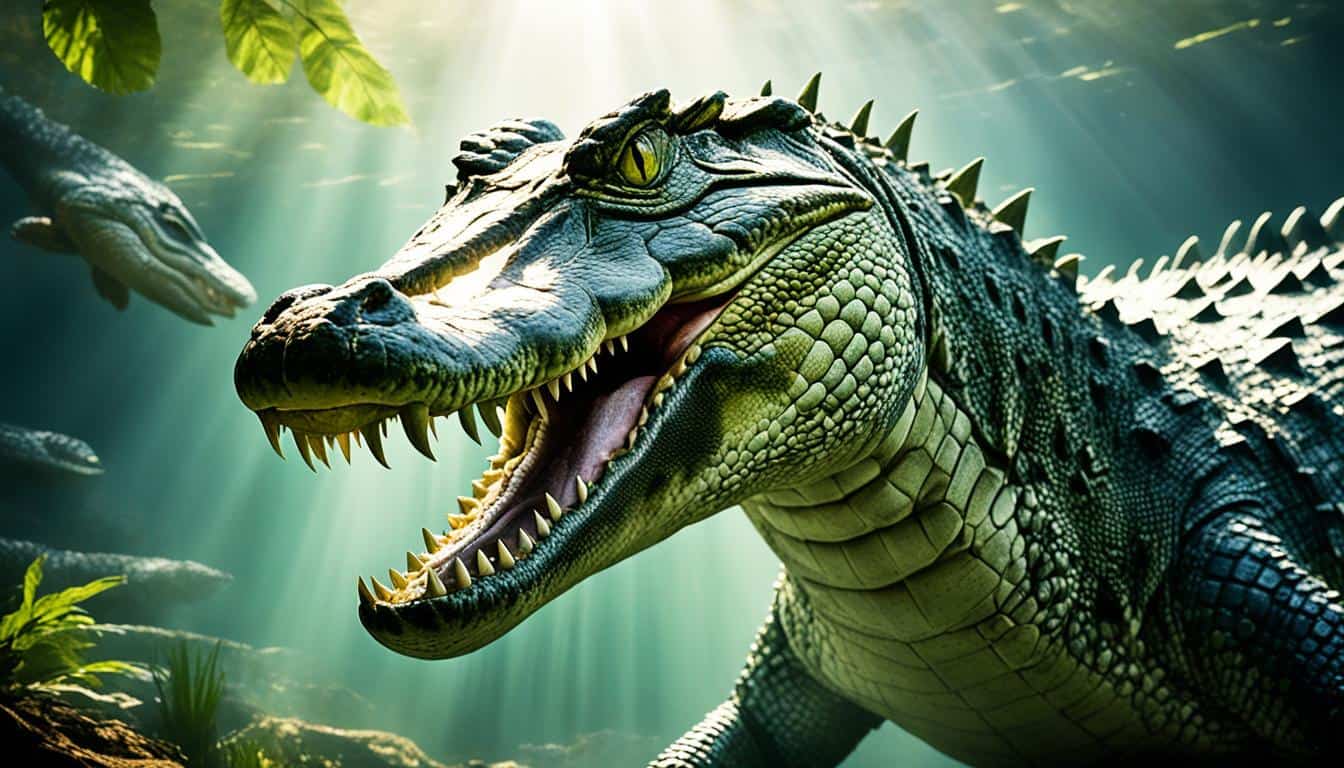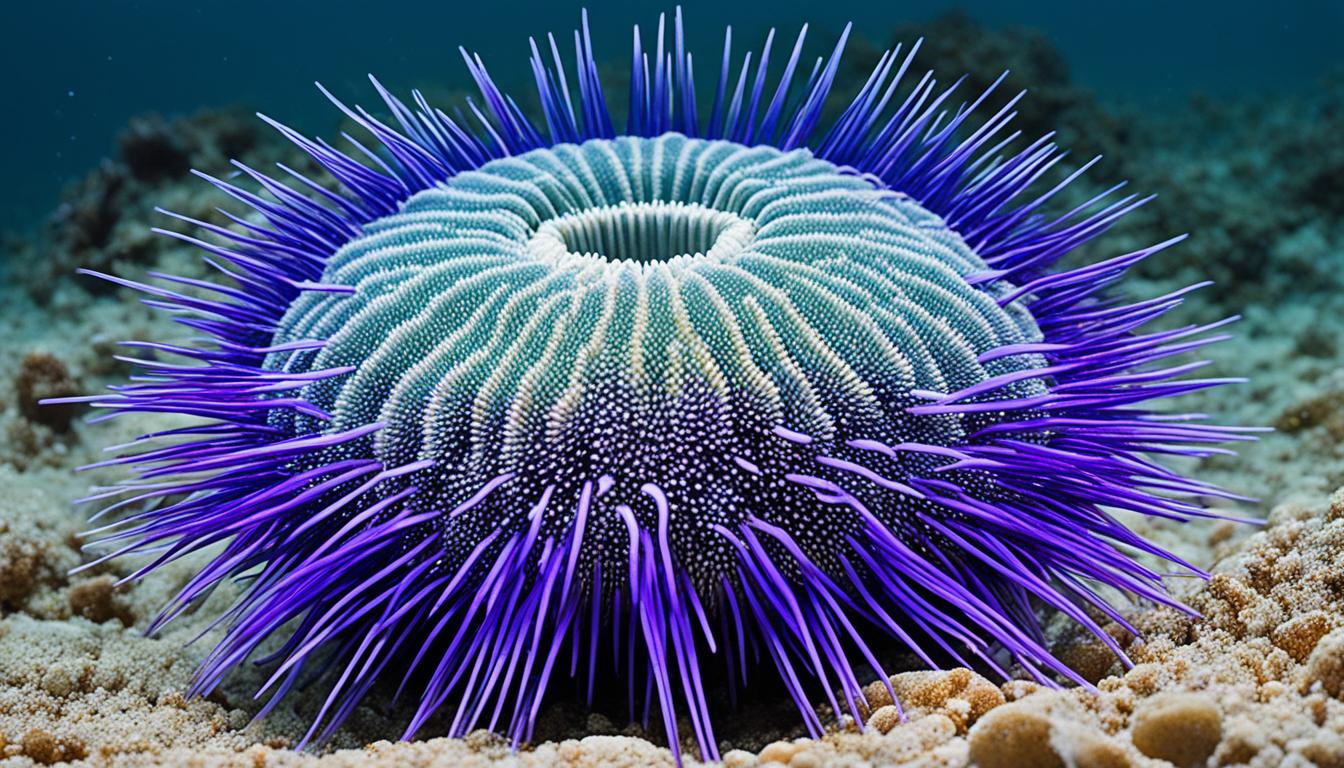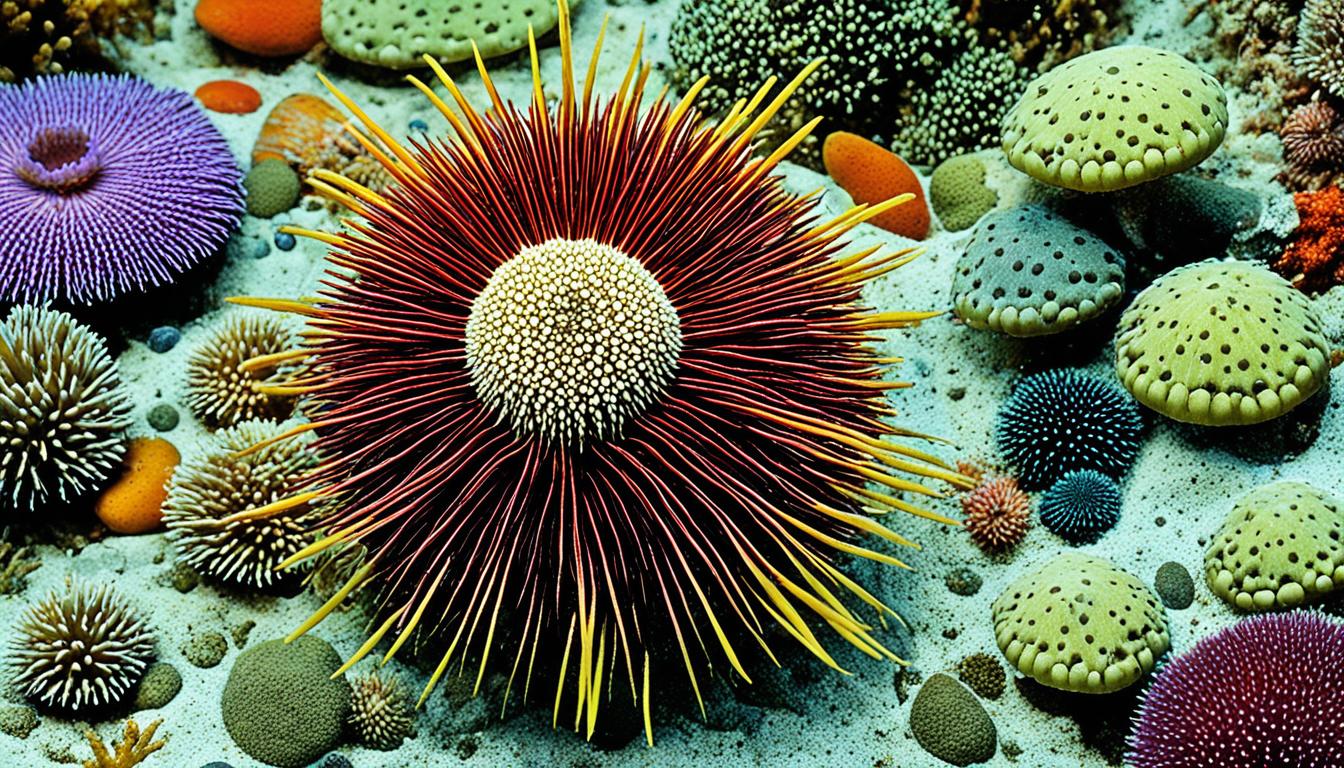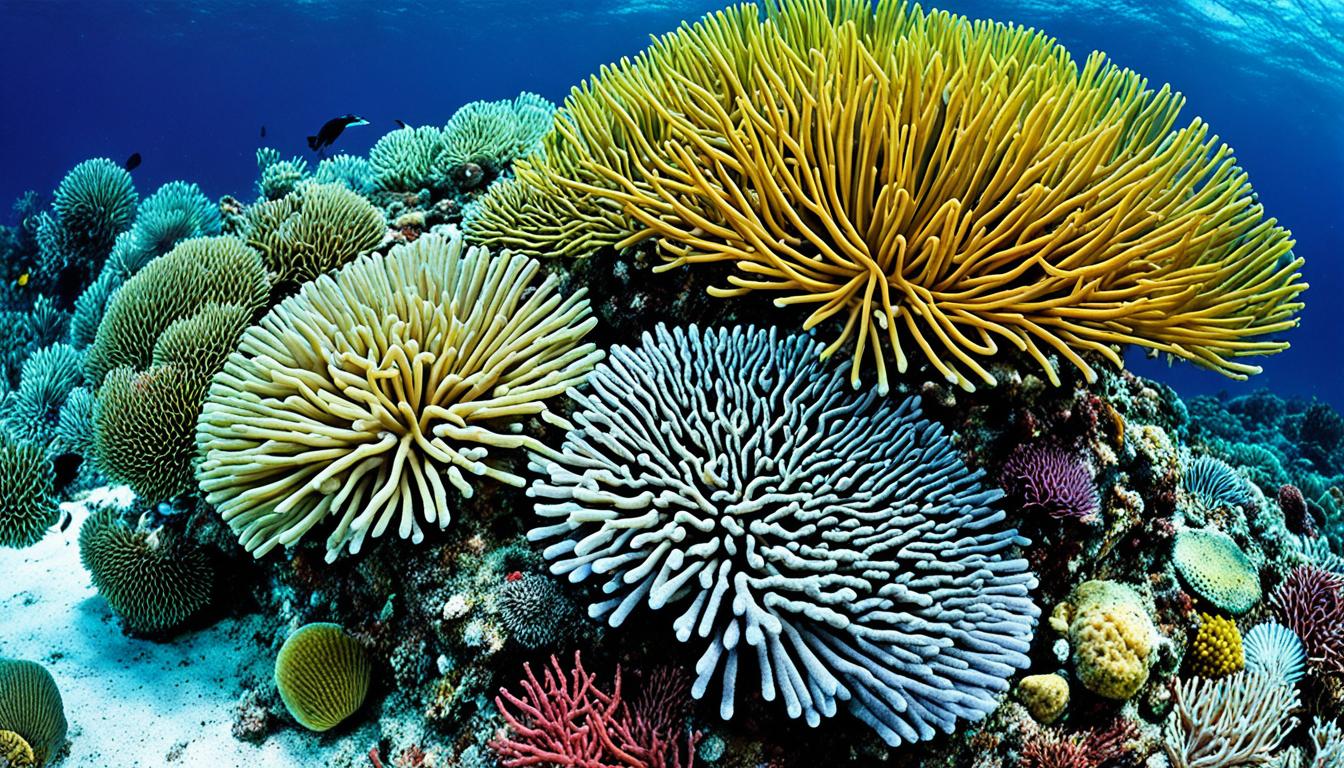Crocodiles have amazed people for centuries. Ever wonder how big they can get? With over 20 species, their size varies a lot. This makes them among the biggest reptiles around.
Let’s dive into their size, how they grow, and what affects their size. You’ll see how huge these creatures can be.
The Fascinating World of Crocodilians
Crocodilians include crocodiles, alligators, caimans, and gharials. They show a wide range of traits, each suited for its environment. These ancient reptiles live in many crocodile habitats around the world, mostly in the tropics and subtropics.
In the United States, you’ll find two main crocodilian species. The American crocodile and the American alligator live in different places. The American crocodile likes coastal areas and salty waters. The American alligator prefers freshwater, like swamps and rivers.
Knowing where these reptiles live helps us understand their growth and reptile dimensions. Things like water temperature, salt levels, and food availability affect their size and health. By learning about their habitats, we can better appreciate these amazing reptiles and what helps them survive.
| Crocodilian Species | Preferred Habitat |
|---|---|
| American Crocodile | Coastal areas, brackish waters |
| American Alligator | Freshwater swamps, rivers |
| Caiman | Freshwater lakes, wetlands |
| Gharial | Riverine habitats, freshwater rivers |
How Big Do Crocodiles Get?
Crocodiles come in different sizes, depending on the species. Knowing the average size helps us understand their amazing variety. Things like age, gender, and where they live affect their size.
Average Size of Crocodiles
Adult crocodiles are usually 8 to 20 feet long. Males are often bigger than females. The American crocodile can get up to 20 feet long. But in the wild, they usually don’t get that big.
Size Variation Among Different Species
Each crocodile species is different in size. The saltwater crocodile is the biggest, sometimes over 23 feet long. Things like food and where they live affect their size. It’s important to see how these things make crocodiles vary in size.
| Species | Average Length (feet) | Maximum Recorded Length (feet) |
|---|---|---|
| American Crocodile | 13-20 | 20 |
| Saltwater Crocodile | 14-23 | 23+ |
| Nile Crocodile | 8-16 | 20 |
| Orinoco Crocodile | 10-16 | 16 |
The Largest Crocodile Species
Crocodiles are fascinating creatures, especially when we look at the biggest ones. Seeing how big they are helps us understand their role in nature. It shows how they adapt to their environments.
Cubans and Americans: Size Comparisons
The American crocodile lives in places like Florida and the Caribbean. It grows to be about 13 to 16 feet long. On the other hand, the Cuban crocodile is smaller, reaching lengths of 7 to 10 feet. These differences show how different places shape their growth and behavior.
The Saltwater Crocodile (Crocodylus porosus)
The saltwater crocodile is known for its massive size and strength. It can be over 20 feet long, making it one of the top predators. Its ability to live in different places helps it grow so big. This creature stands out among other large species, showing its power in various ecosystems.
Record-Breaking Crocodile Lengths
The world of large crocodiles is filled with amazing records. These records amaze and scare people. They show how big these creatures can get and their long history.
Noteworthy Instances of Large Crocodiles
Lolong, a saltwater crocodile, was incredibly long at 20.2 feet and heavy over 2,000 pounds. It became a symbol of how big crocodiles can grow. Other large crocodiles of the same type also show how big they can be.
Fossil Evidence of Extinct Species
Fossils tell us about even bigger crocodilians that lived long ago. For example, Purussaurus, an extinct species, could be up to 41 feet long. These fossils show how changes over time affected crocodiles’ growth and body shape.
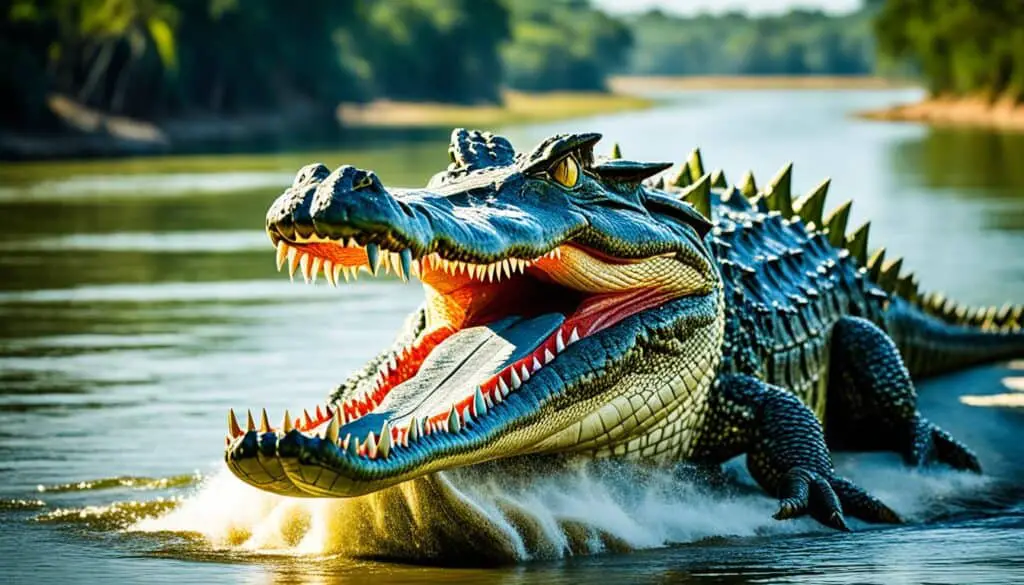
| Species | Estimated Length | Weight |
|---|---|---|
| Lolong (Saltwater Crocodile) | 20.2 feet | 2,000+ pounds |
| Purussaurus (Extinct) | 41 feet | Unknown |
Crocodile Growth Rates
Crocodiles grow at different rates, depending on several factors. These factors affect how big they can get over time. Diet, environment, and habitat all play a part in their growth. When they eat well, they grow faster.
Factors Influencing Growth Rates
Several key factors affect crocodile growth:
- Diet: Eating a diet rich in protein helps them grow faster.
- Environmental Temperature: Warm weather helps them grow quicker. Cold weather slows it down.
- Habitat Conditions: Having enough space and good living conditions is key to their growth.
Age and Size Correlation
Age and size are closely linked in crocodiles. Young ones grow fast, reaching big sizes in just a few years. This is especially true under the best conditions. As you look at different ages, you’ll see how size changes. With the right care and environment, they can get much bigger, showing their growth rates.
Physical Dimensions of Crocodiles
Understanding the size and characteristics of crocodiles is key. Their length and weight vary a lot by species. Adult crocodiles can weigh from 1,000 to 2,000 pounds or more. They can be over 20 feet long, especially the saltwater crocodile.
Common Measurements: Length and Weight
Measuring crocodiles means looking at their length from snout to tail tip and their weight. These are important for scientists studying them. Length is striking, but weight shows their health and maturity. Knowing these dimensions helps us see how they fit into their environments.
Unique Distinguishing Features of Crocodiles
Crocodiles have special features that help them survive and be identified. Snout shape tells us about their diet and hunting ways. Skin color helps them blend in and control their body temperature. These features show how important they are in their ecosystems. Knowing about them helps us protect and manage wildlife better.
FAQ
How big do crocodiles get on average?
Adult crocodiles usually measure between 8 to 20 feet long. Males are bigger than females. The American crocodile can get up to 20 feet long, but usually stays around 14 feet in the wild.
What is the largest crocodile length ever recorded?
The biggest crocodile ever found was a saltwater crocodile. Some can be over 23 feet long. One famous one, named Lolong, was 20.2 feet long and weighed over 2,000 pounds.
What are the different crocodilian species and their sizes?
Crocodilians include crocodiles, alligators, caimans, and gharials. They vary in size. The saltwater crocodile is huge, but the Cuban crocodile is smaller and has special traits. This shows the wide range of sizes among crocodiles.
How do environmental factors influence crocodile size?
Things like food, temperature, and where they live affect how big crocodiles get. If they have plenty to eat, they grow faster. But cooler places slow down their growth.
What features help distinguish different species of crocodiles?
Things like the shape of their snout, skin color, and size help tell crocodile species apart. Knowing these features helps us understand how they adapt to different places.
How does age correlate with the size of crocodiles?
Young crocodiles grow fast if they have enough food and a good environment. As they get older, their size can depend on what they eat and where they live.

